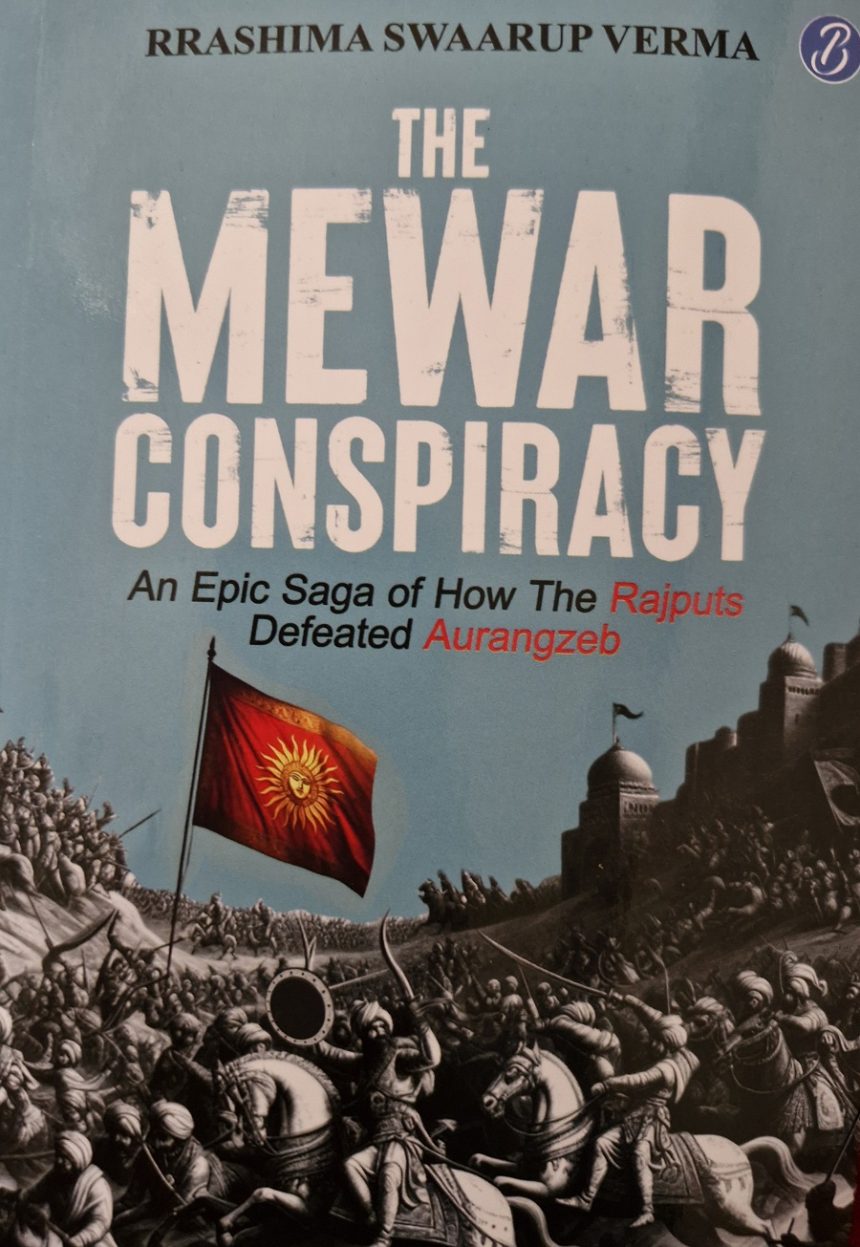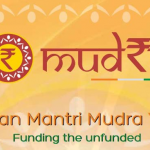BOOK REVIEW
Historical evidences worldwide have thrown numerous instances where ‘loose confederations’ of various castes, creeds and such like groups sprang overnight to either put up a join resistance against a common enemy or foreign invaders to gain and maintain moral or material ascendency; that was unthinkable in normal circumstances. India as such was no stranger to such loose confederacies right till the advent of British occupation. Even many times these loose confederations of native origins fought against each other like in the case of ‘Maratha-Sikh’ clashes of 1766 -1789 when a series of internecine conflicts between the above two were concentrated in the ‘Cis-Sutlej’ territories and the ‘upper Gangetic Doab’.
In the similar vein , ‘Rajput confederacy’ , a loosely bound alliance of Rajput states , played a significant role in the history of Indian subcontinent , particularly in resisting foreign invasions and maintaining regional autonomy. The’ Rajput confederacy’ wasn’t a unified empire, but rather a collection of Rajput states under the informal suzerainty of certain powerful rulers, like the Maharanas of Mewar.
In one of the sterling examples, the earliest such Rajput confederacy was borne out of the need to drive out the first Muslim invasion carried out by the Arabic marauder Mohammed Bin Qasim in the year 738 CE upon Indian sub-continent from the direction of present day Sind (Pakistan) on the then ruler Raja Dahir Sen of Sind. ‘Bappa Rawal’ of Mewar, leading the Mewar army ,struck alliance with the brave Nagabhatta -1 of the Gurjara-Prathihara dynasty ruling the Malwa region of today’s MP to drive out the evil Arabic chieftain from the shores of the country. Incidentally BappaRawal is known to be the first established Maharana of Mewar dynasty.
Though in between many attempts at Rajput confederacies resulted into captivating victories against foreign invaders, it was the last ruler of Mewar, ‘Rana Raj singh’ who exactly 1000 years after the first Rajput confederacy dealt a fatal blow to one of the most fanatic Mughal emperors –Aurangzeb in the famous skirmish near present day ‘Kishangarh’. All for upholding the age old tradition of a Rajput’s credo—saviour of a woman’s honour.
The present article of mine is based on a ‘book review’ on an excellent ‘non-fiction’ book titled as ‘The Mewar conspiracy’ with an equally captivating sub –title as ‘ An epic saga of how the rajputs defeated Aurangzeb’ penned by a refreshingly new lady author –Rrashima Swaarup verma’. The book though is a compilation of true facts and figures as they presented themselves at the time of this famous historical event written in a highly engaging conversational approach making the reading almost like a three dimensional experience.
All of two hundred & fifteen ( 215) pages) including the author’s note and a humongous array of ‘Endnotes’ which is at the end of this masterpiece treatise on Rajput valour, the racy narrativization is at its best as when the reader keeps flipping through the pages glued by the sheer plot of the true story.
‘The Mewar conspiracy’ is neatly divided into twenty three ( 23) chapters , with each chapter oscillating between the palace intrigues that were woven at Kishangarh fort where lived the extremely beautiful princess Charumati daughter of late Raja Roop Singh along with her brother Raja Man singh and Shahjanabad the official capital of the Mughal empire under Aurangzeb.
The opening chapters numbering from one (1) to three (3) narrate the inimitable princess Charumati in all her naivety when she throws a portrait of ‘Alamgir Aurangzeb’ on ground crushing with her ‘jooti’ which was brought to her palace by an elder Muslim lady seller for sale. With her extreme disdain for the emperor spreading like wild fire through the grapevines right till Shajanabad, the capital of Mughal Empire and further added fuel to the fire by the ever loving daughter Zeb-u-Nisa of Aurngzeb, the stage was set for the ultimate clash of arms between the Rajput pride and Mughal ire.
This epic book revolving around princess Charumati of Kishangarh ( near Ajmer) has shown her brother Raja Man Singh in a very tight spot when the emperor sends a marriage proposal for princess Charumati to teach her a lesson by making her his begum in his harem, thereby thinking of clipping her wings of high headedness. The pages of the chapters are full of twists and turns as well as unsuspecting characters like ‘Jodhpuri begum’ (a Rajput princess but married to Aurangzeb) coming to the rescue of princess Charumati when she learns of the faux pas at fort Kishangarh.
In fact Jodhpuri begum is the lynch pin in this entire narration around whom hinges the further progress of the saga through which Princess Charumati is passing. It was Jodhpuri Begum who sends a fast horseman with her urgent message to Prince Charumati from Shahjhanabad to fort Kishangarh to approach Raja Raj singh of Mewar for saving her honour at this time of her predicament. With Aurangzeb feverishly preparing for the marriage, time was running short for the princess to bite the bullet, which she eventually does by sending her family’s trusted head priest on one of the fastest horses of Kishangarh to Udaipur with letter to Rana Raj singh of Mewar for help.
Incidentally this letter written by princess Charumati to the Rana in the 17 th century is still preserved in the annals of Mewar royal house bringing forththe testament of ‘Rajput confederacy’ to fruition. Visitors to the present day Udaipur can lay their eyes on this epic letter even today.
The lady author has very deftly weaved a labyrinthine of episodes in between chapters numbering five ( 5) to twenty two (22) detailing the receipt of a SOS message from princess Charumati to Rana Raj singh, preparations for the clash of arms between the Mughals and the Mewar army, Rana’s request to his bosom friend Rawat Ratan Singh Choondawat, the keeper of Saloombar house to prepare a few thousand extremely courageous Rajput warriors with instructions to proceed immediately to Ajmer for intercepting the Mughal army unsuspectingly in a narrow defile while proceeding to fort Kishangarh.
The high point of this exceptional book is the unflinching loyalty shown by Rawat Ratan Singh Choondawat in accepting the gauntlet thrown his way by Rana Raj singh to interdict the Mughals despite his marriage to the brave Hada princess SahalKunwar just seven days old. A sacrifice which is hard to come by even by any standards of yore as well as by today’s yardstick of loyalty. A perfect case of ‘Rajput Confederacy’ at its best.
As if that was not enough, the latter pages of this book cover the singular act of sacrifice of Princess ‘Sahal Kunwar’ wife of Rawat Ratan Singh Choondawat by slashing her own neck and presenting her head to her husband in the battlefield near Kishangarh which lifted her and put her in the realm of super humans. Taking the head in a golden plate carried by a horseman as a mark of her supreme dedication to the cause of the battle and also to free her husband from the pangs of separation that he was being visited upon, this act of superhuman valour surpassed even the passive way of sacrifices marked by the ‘Jauhars’ carried out by the Rajput ladies only to be forever etched on the mental as well as physical firmament of Rajasthan.
The husband Ratan Singh Choondawat thereafter tied the severed head of his wife with his own neck, mounted his horse and drove off to battle in absolute rage and pain only to decimate the Mughals in this skirmish near Kishangarh. Having returned to his camp site after winning the battle, Ratan Singh Choondawat dismounted from his horse, knelt down and slashed his own neck having lost the desire to live. So much so that both the husband –wife duo of Rawat Ratan singh Choondawat and Sahal Kunwar are now a household name in Rajasthan, with the state police of Rajasthan having formed a women’s battalion named as ‘Hadi Rani Mahila Battallion’ to commemorate the brave princess act of sacrifice .
All in all Rrashima the author, has woven a masterpiece which is highly readable book ; one of the most awe-inspiring episodes of the Rajput chronicles that needs to be told and retold in as many ways as possible to the masses of India. Priced at a modest Rs 399/ with its paperback cover equally embellished with a cover picture designed by ‘The book bakers’ and printed under ‘Srishti publishers & distributors’ this is one of those books under the genre of ‘Unputdownable’. The author though having had 4 books already published under her belt, with the present one too recently launched from the famous platform of PVLF (Pragati Vichaar Literature Festival). A must keep for your personal library and history aficionados.
(The writer is a retired army officer, and a regular scribe of Rising Kashmir. He can be approached on his email—[email protected])








